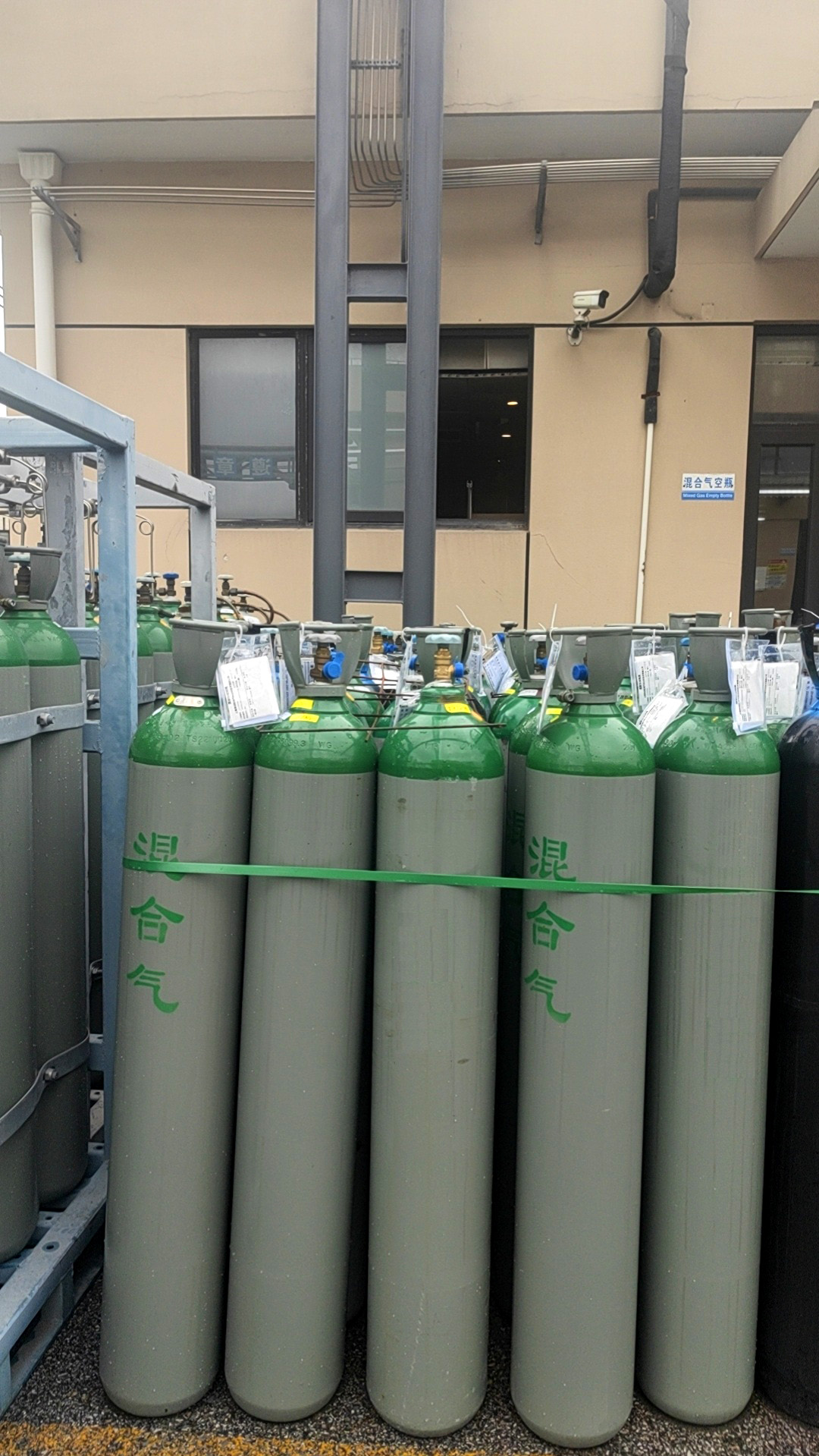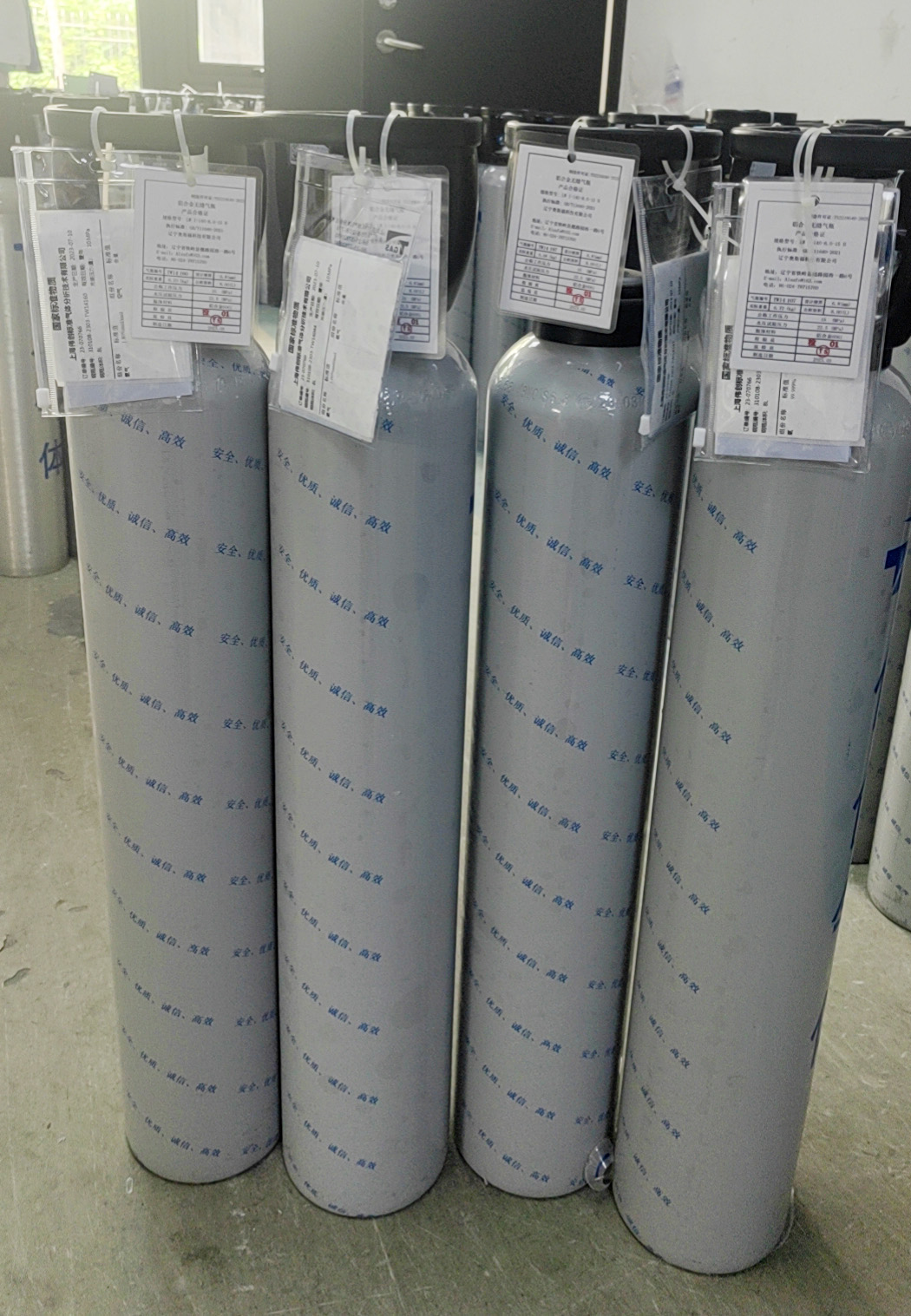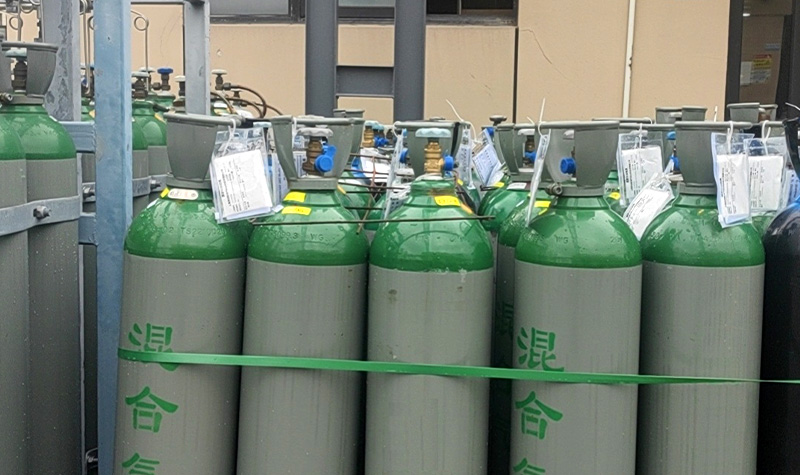Standard gas for environmental monitoring
1.Sulfur dioxide (SO₂) standard gas
It is used for calibrating air quality monitoring stations in accordance with the requirements of “Technical Guidelines for the Preparation of Ecological Environment Planning” (HJ 1359-2024), and the concentration range is usually 0.1 to 1000 ppm.
2.Nitrogen oxides (NOx) standard gas
It contains components such as NO and NO₂, and is used for vehicle exhaust detection (such as the National VI standard) and industrial emission monitoring .
3.Non-methane total hydrocarbons (NMHC) standard gas
Nitrogen is used as the balancing gas for the calibration of VOCs online monitoring systems, with common concentrations ranging from 1 to 1000 ppm.
Industrial safety standard gas
1.Methane (CH₄) standard gas
Coal mine gas detection, natural gas leakage alarm, concentration coverage 0.1% to 100% LEL (lower explosive limit) .
2.Carbon monoxide (CO) standard gas
Safety monitoring in the metallurgical and chemical industries, typical concentration 50-5000 ppm.
3.Hydrogen sulfide (H₂S) standard gas
The detection of toxic gases in petrochemical and sewage treatment plants shall comply with GB 17681-2024 “Technical Specifications for Safety Monitoring of Major Hazard Sources of Hazardous Chemicals” .
Laboratory analytical standard gas
1.High-purity nitrogen (N₂)
As carrier gas for gas chromatograph, the purity should be ≥99.999%.
2.Helium (He) standard gas
Calibration of mass spectrometer, concentration accuracy reaches ppb level .
3.Oxygen (O₂) standard gas
Medical ventilators, combustion efficiency testing, common concentrations 21% to 100%.
Standard gas for special fields
1.Sulfur hexafluoride (SF6) standard gas
Insulation testing of high-voltage equipment in the power industry shall comply with the environmental protection requirements of GB/T 41002-2022 “General Technical Specification for Children ‘s Luggage” .
2.Argon (Ar) standard gas
Semiconductor manufacturing protective gas, purity ≥99.9999%.




